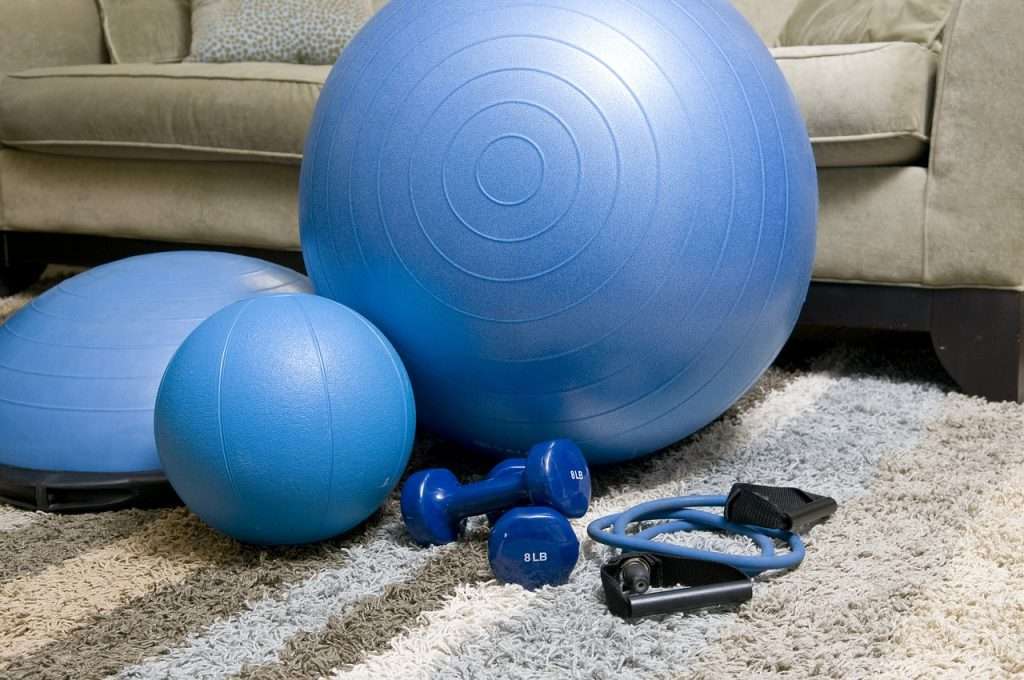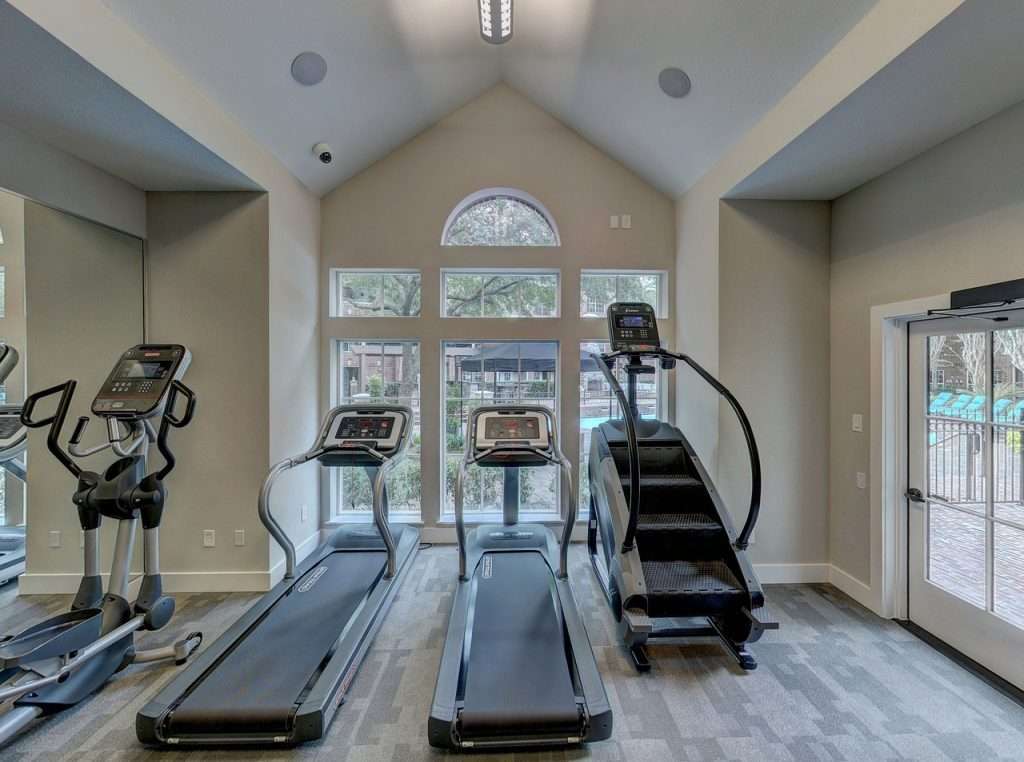Are you thinking of the Must-Have Fitness Tools for Your Home Gym? Imagine having a dedicated space in the comfort of your home to work up a sweat, build strength, and improve your overall fitness at your convenience. Creating a home gym is not only a practical solution for those with jam-packed schedules but also a game-changer for anyone looking to take their fitness journey to the next level.
However, building the perfect home gym isn’t just about finding an empty corner of your house and throwing in a yoga mat. You need the right tools to maximize your workouts and achieve your fitness goals. That’s where our comprehensive guide comes in: “The Ultimate Guide to Must-Have Fitness Tools for Your Home Gym.” This article will explore the essential fitness tools that transform your home gym into a health and wellness powerhouse.
What is a home gym?
A home gym is a designated space in your home where you can exercise. It can be as simple as a corner of your bedroom with a yoga mat and a few dumbbells or a fully equipped gym with treadmills, weight benches, and other exercise equipment.
Benefits of having a home gym
Home gyms are becoming increasingly popular as they offer several advantages over traditional gyms. Some of the benefits of having a home gym include:
- Convenience: You can work out whenever you want without traveling to a gym. This proves highly convenient, especially for individuals with hectic schedules or residing in rural areas.
- Privacy: You can work out in the privacy of your own home without having to worry about being self-conscious or judged by others.
- Affordability: Over time, a home gym can save money on membership.
- Customization: You can customize your home gym to meet your needs and fitness goals.
- Flexibility: You can work out on your own time and at your own pace. You’re not limited to the gym’s hours of operation.
- Variety: You can have a wider variety of equipment at home than you would typically find at a gym. This allows you to mix up your workouts and target different muscle groups.
- Safety: You can control your environment and reduce the risk of injury.
- Hygiene: You don’t have to share equipment with other people, which can reduce the risk of spreading germs.
- Family-friendly: A home gym is a great way to get your family involved in fitness
Must-have fitness tools for your home gym
Here are some must-have fitness tools for your home gym:
- Exercise mat: An exercise mat is essential for floor exercises like crunches, push-ups, and yoga. It provides a comfortable and non-slip surface to work on.
- Dumbbells: Dumbbells are versatile fitness tools for various exercises, including bicep curls, tricep extensions, and shoulder presses. They’re also great for building muscle strength and endurance.
- Resistance bands: Resistance bands are another versatile piece of equipment that can be used for various exercises. They’re also very portable, so you can take them when traveling.
- Pull-up bar: A pull-up bar offers an effective method for developing upper body strength and endurance. It’s also a relatively inexpensive piece of equipment.
- Medicine ball: A medicine ball finds utility in various exercises, like squats, lunges, and throws. It’s a great way to add variety and challenge to your workouts.

If you have a little more space and budget, you may also want to consider adding the following equipment to your home gym:
- Treadmill or elliptical: A treadmill or elliptical is a great way to get a cardio workout at home.
- Weight bench: A weight bench lets you do exercises like bench presses, rows, and overhead presses.
- Squat rack: A squat rack is essential for squats and deadlifts.
- Power rack: A power rack is a more versatile piece of equipment than a squat rack. It lets you do squats, deadlifts, bench presses, rows, and overhead presses.
How to set up a gym at home
Setting up a home gym doesn’t have to be expensive or time-consuming. With some planning, you can construct a home gym that aligns with your requirements and propels you toward your fitness aspirations.
Here are a few tips on how to set up a gym at home:
- Choose a suitable space. When choosing a space for your home gym, consider the following factors:
- Size: How much space do you have available? If you’re limited on space, you may want to start with a few essential pieces of equipment and gradually add more as you need them.
- Flooring: If you’re working out on hardwood or tile floors, you may want to put down a rubber mat or carpet to protect them.
- Lighting: Make sure you have enough light in your gym space. If you’re working out in a basement or garage, you may need to add some additional lighting.
- Determine your fitness goals. What are your objectives for your home gym? Are you aiming to build muscle, shed weight, or enhance cardiovascular fitness? Once your fitness goals are clear, you can make informed choices regarding the suitable equipment.
- Set a budget. How much money are you willing to spend on your home gym? A wide range of exercise equipment is available, so you can find something to fit your budget.
- Choose your equipment. Once you have a budget and know your fitness goals, you can start choosing your equipment.
What is the best size for a home gym?
The best size for a home gym depends on your fitness goals, the type of equipment you want to use, and the available space. If you’re just starting, you may be able to get away with a small gym space. But you’ll need a larger space if you have more ambitious fitness goals or want to use various equipment.
Here is a guide to choosing the best size for a home gym:
- Small home gym: If you have limited space, you may want to consider setting up a small home gym. A small home gym can be as small as 50-100 square feet. This space is enough to fit a few basic pieces of equipment, such as an exercise mat, dumbbells, and resistance bands.
- Medium home gym: If you have more space and want to use a wider variety of equipment, you may want to consider setting up a medium home gym. A medium home gym should be at least 100-200 square feet. This space is enough to fit a few basic pieces of equipment and some larger pieces of equipment, such as a treadmill, elliptical, or weight bench.
- Large home gym: If you have a lot of space and want to use various equipment, you may want to consider setting up a large home gym. A large home gym should be at least 200 square feet. This space is enough to fit a variety of equipment, including a treadmill, elliptical, weight bench, squat rack, and power rack.
Conclusion
Building a home gym doesn’t have to be expensive or time-consuming. By starting with the basic equipment and gradually adding more pieces as your budget and space allow, you can establish a home gym tailored to your requirements, effectively assisting you in accomplishing your fitness objectives.

